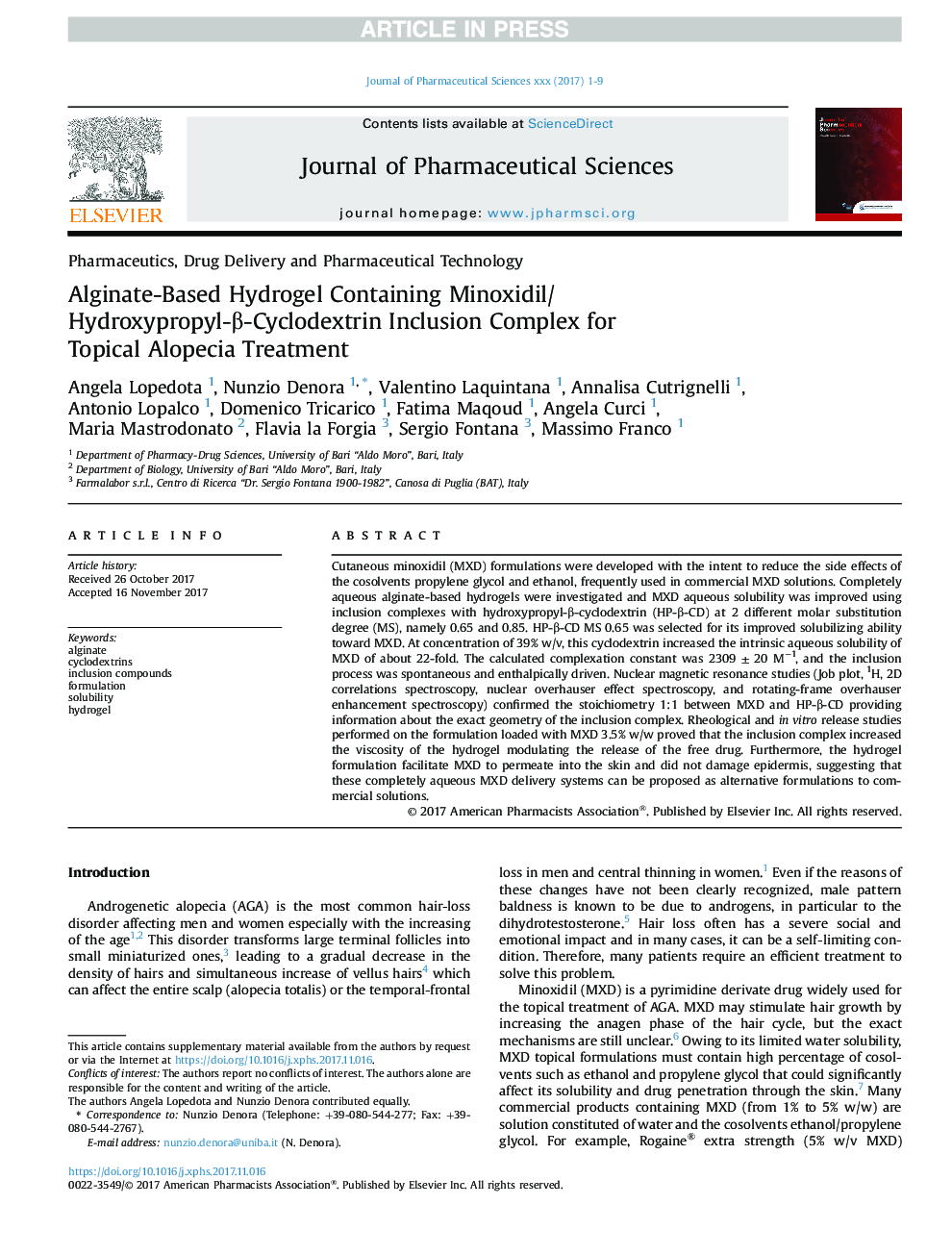| Article ID | Journal | Published Year | Pages | File Type |
|---|---|---|---|---|
| 8513377 | Journal of Pharmaceutical Sciences | 2018 | 9 Pages |
Abstract
Cutaneous minoxidil (MXD) formulations were developed with the intent to reduce the side effects of the cosolvents propylene glycol and ethanol, frequently used in commercial MXD solutions. Completely aqueous alginate-based hydrogels were investigated and MXD aqueous solubility was improved using inclusion complexes with hydroxypropyl-β-cyclodextrin (HP-β-CD) at 2 different molar substitution degree (MS), namely 0.65 and 0.85. HP-β-CD MS 0.65 was selected for its improved solubilizing ability toward MXD. At concentration of 39% w/v, this cyclodextrin increased the intrinsic aqueous solubility of MXD of about 22-fold. The calculated complexation constant was 2309 ± 20 Mâ1, and the inclusion process was spontaneous and enthalpically driven. Nuclear magnetic resonance studies (Job plot, 1H, 2D correlations spectroscopy, nuclear overhauser effect spectroscopy, and rotating-frame overhauser enhancement spectroscopy) confirmed the stoichiometry 1:1 between MXD and HP-β-CD providing information about the exact geometry of the inclusion complex. Rheological and in vitro release studies performed on the formulation loaded with MXD 3.5% w/w proved that the inclusion complex increased the viscosity of the hydrogel modulating the release of the free drug. Furthermore, the hydrogel formulation facilitate MXD to permeate into the skin and did not damage epidermis, suggesting that these completely aqueous MXD delivery systems can be proposed as alternative formulations to commercial solutions.
Related Topics
Health Sciences
Pharmacology, Toxicology and Pharmaceutical Science
Drug Discovery
Authors
Angela Lopedota, Nunzio Denora, Valentino Laquintana, Annalisa Cutrignelli, Antonio Lopalco, Domenico Tricarico, Fatima Maqoud, Angela Curci, Maria Mastrodonato, Flavia la Forgia, Sergio Fontana, Massimo Franco,
